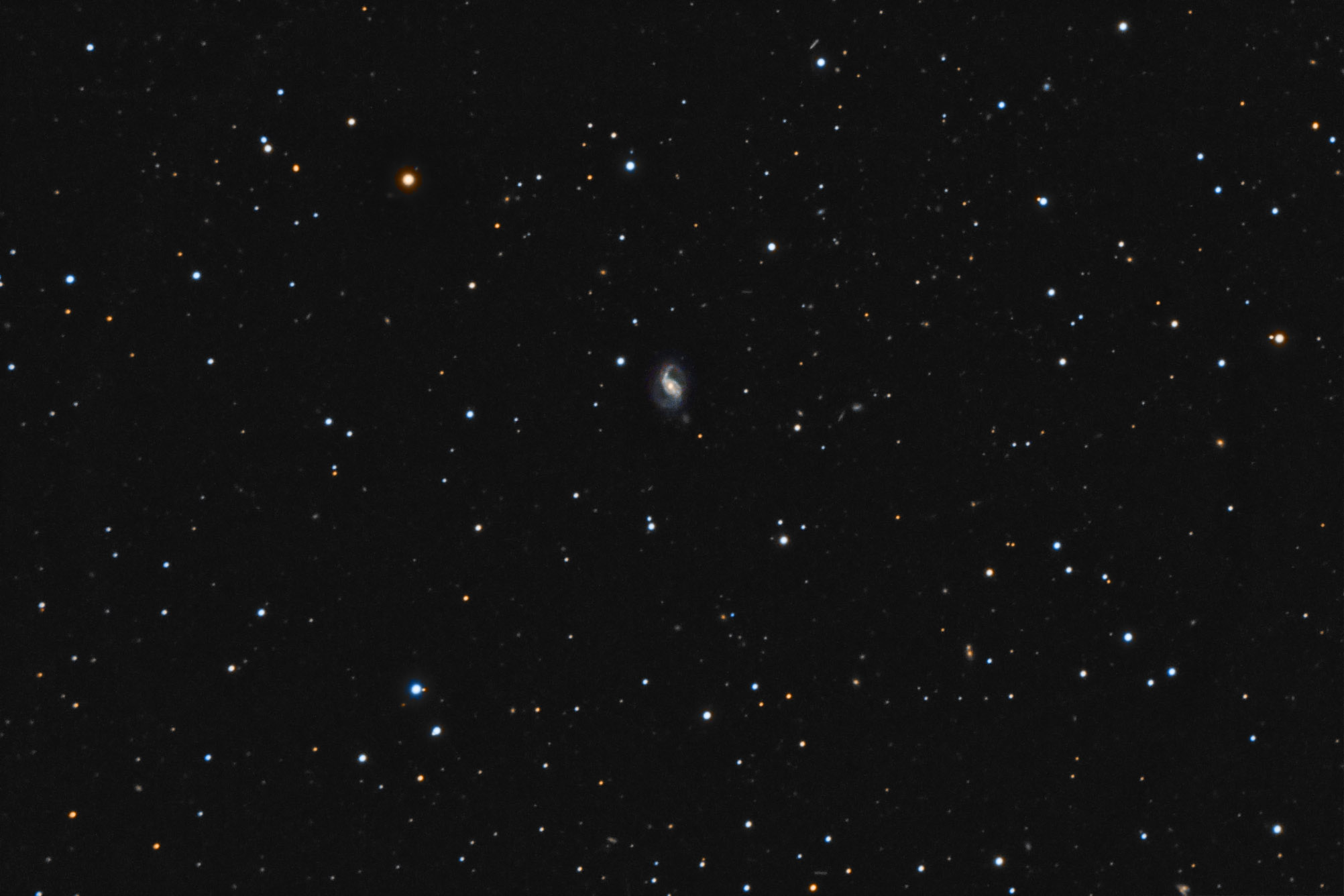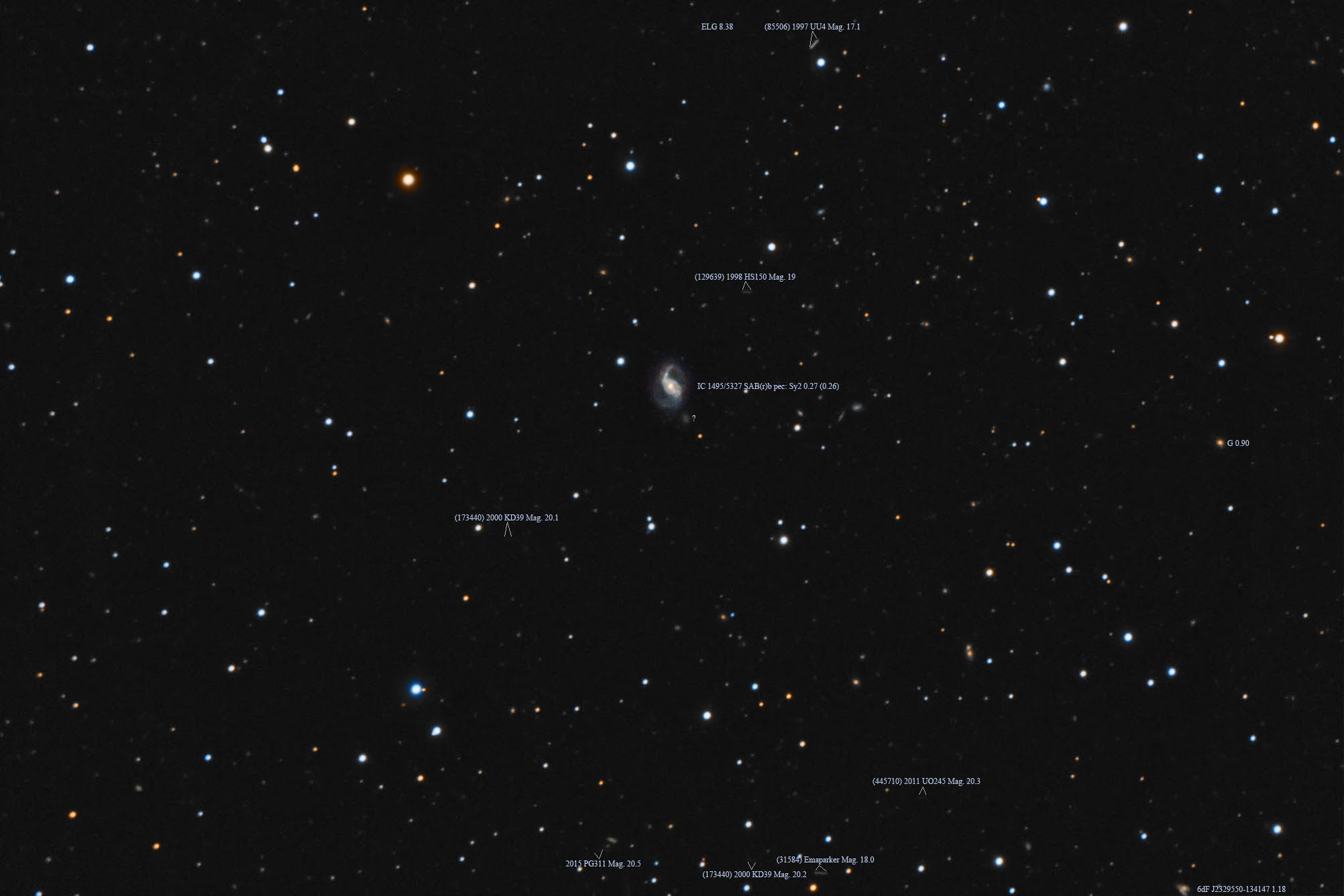| Description | Images |
Object name: IC1495Designation(s): IC1495, IC5327, IC 1495/5327 is a peculiar galaxy in southeastern Aquarius. It is about 270 million light-years by redshift and 260 million light-years by Tully-Fisher measurements, a very good agreement. I measure it at about 108,000 light years in size. It is too low for me except on a great night. Unfortunately, none of the three nights I tried for it were close. Turned out the first night was the only one to generate usable frames for luminance but color frames were better other nights. It's classified as SAB(r)b pec: with an Sy2 nucleus. Located in the Zone of Avoidance it is in a very poorly studied area as to galaxies. Often the pec status and an active nucleus are indications of a recent interaction with another galaxy. Could the diffuse blob to the south-southwest be the cause? I can't even find a listing for it in NED. The MCG just refers to it as a diffuse companion yet doesn't include it. NED lists redshift for only three other galaxies, a bright spherical galaxy near the right edge of my image which is at about 900 million light-years and a very faint Emission Line Galaxy near the top. It must really be very bright for me to see it at over 8 billion light-years. At the bottom right is a pair of possibly interacting galaxies but only the western one (on the right) has a redshift available. Without a distance indicator for both, there's no way to prove they aren't just two unrelated galaxies that happen to be along our line of sight. Related Designation(s):2MASS J23304775-1329076, 2MASX J23304773-1329076, 2MIG 3166, 6dF J2330477-132908, GALEXASC J233047.63-132909.0 , GALEXMSC J233047.55-132910.1 , GSC 5835 00602, IC 1495, IC 5327, IC1495, IC5327, IRAS 23281-1345, IRAS F23282-1345, LQAC 352-013 001, MCG -02-59-024, NVSS J233047-132915, PGC 071631, [VCV2001] J233047.9-132911, [VCV2006] J233047.7-132908, |

